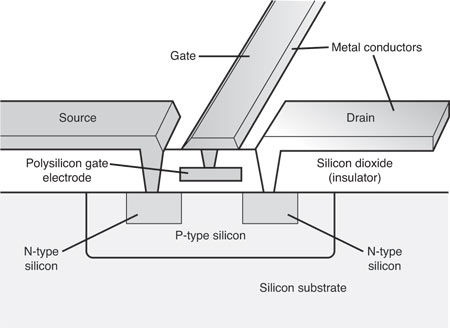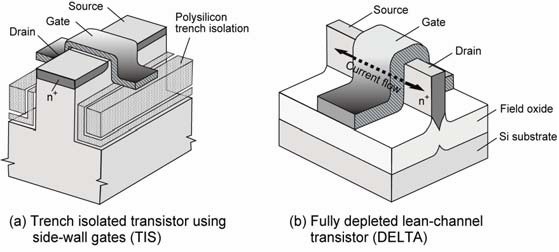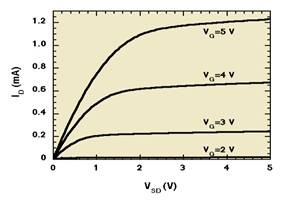Condition for current flow in N-MOS semiconductor


N-MOS have three terminals, Gate, Drain and Source. Gate terminal is provided the positive voltage; initially the source and drain are grounded. This voltage will push the p-substrate holes downward leaving behind the electrons. The electrons starts gathering under the Sio2 (dielectric) in p-substrate. This layer of electrons is called the inversion layer. The voltage at which inversion layer starts is called Threshold voltage. If the gate voltage is increase above the threshold voltage then conduction will start. So the channel is produced for the flow of current but the current is so small from gate to source in milli amperes.

The drain is provided the positive voltage to flow the current through channel. The current in N-MOS will flow when the drain voltage is increased. As the drain voltage is increased more electrons will flow from source to drain this is called the electronic flow, id current will flow drain to source this is called the Conventional flow. When the gate voltage is increased from threshold voltage the conductance is increased. So the larger current will flow when the gate voltage is greater than threshold voltage and drain voltage is increased. More current will flow as more and more drain voltage will increase.

this i-v curve shows that when drain voltage increases the current will increases provided gate voltage greater then threshold voltage.



